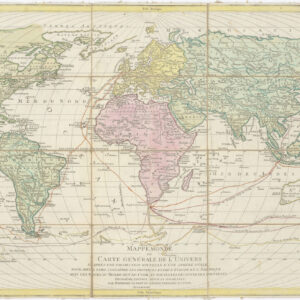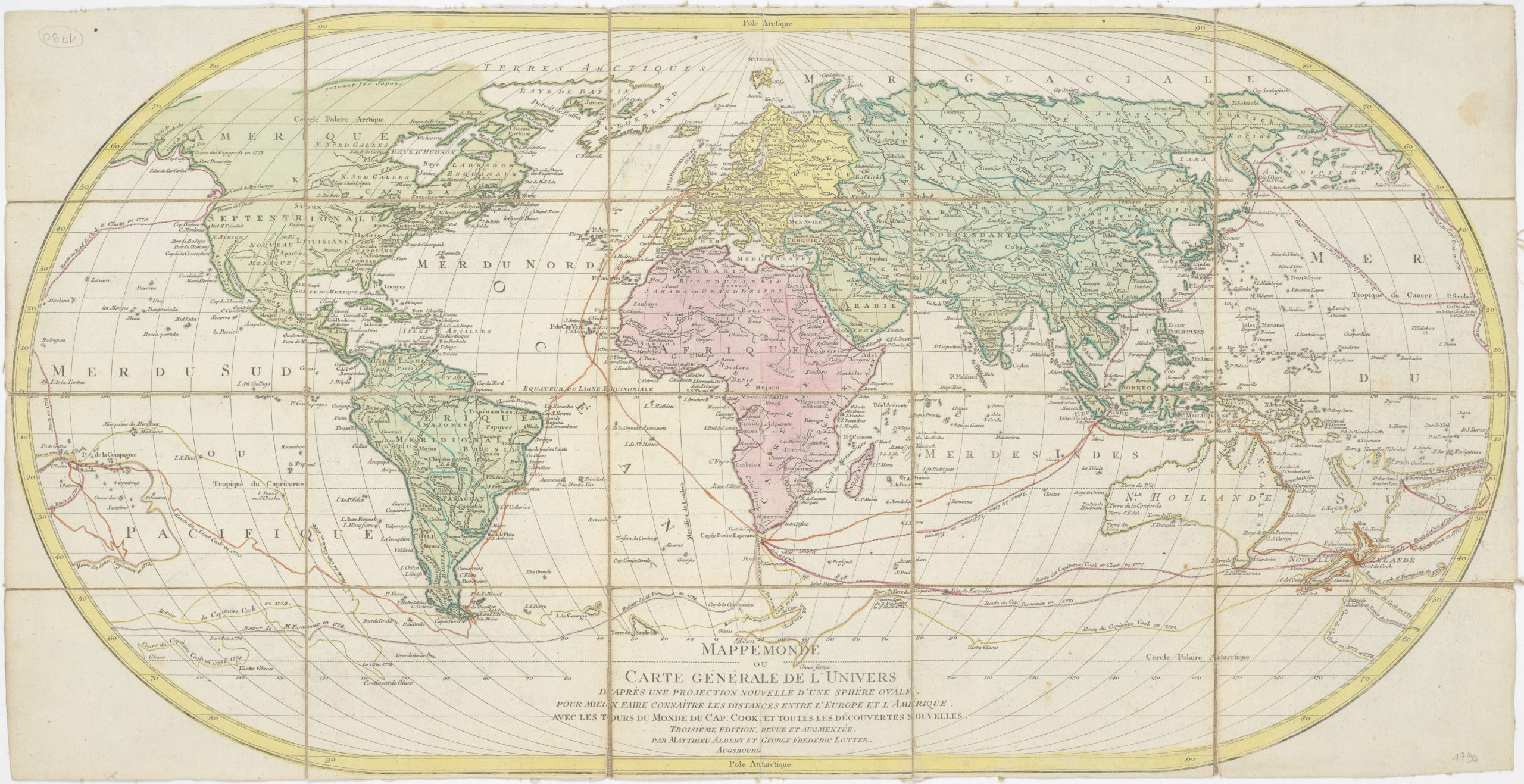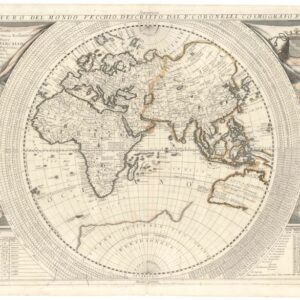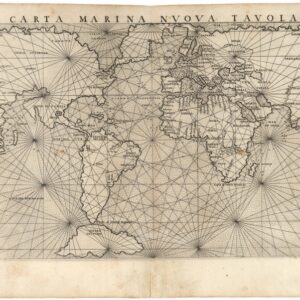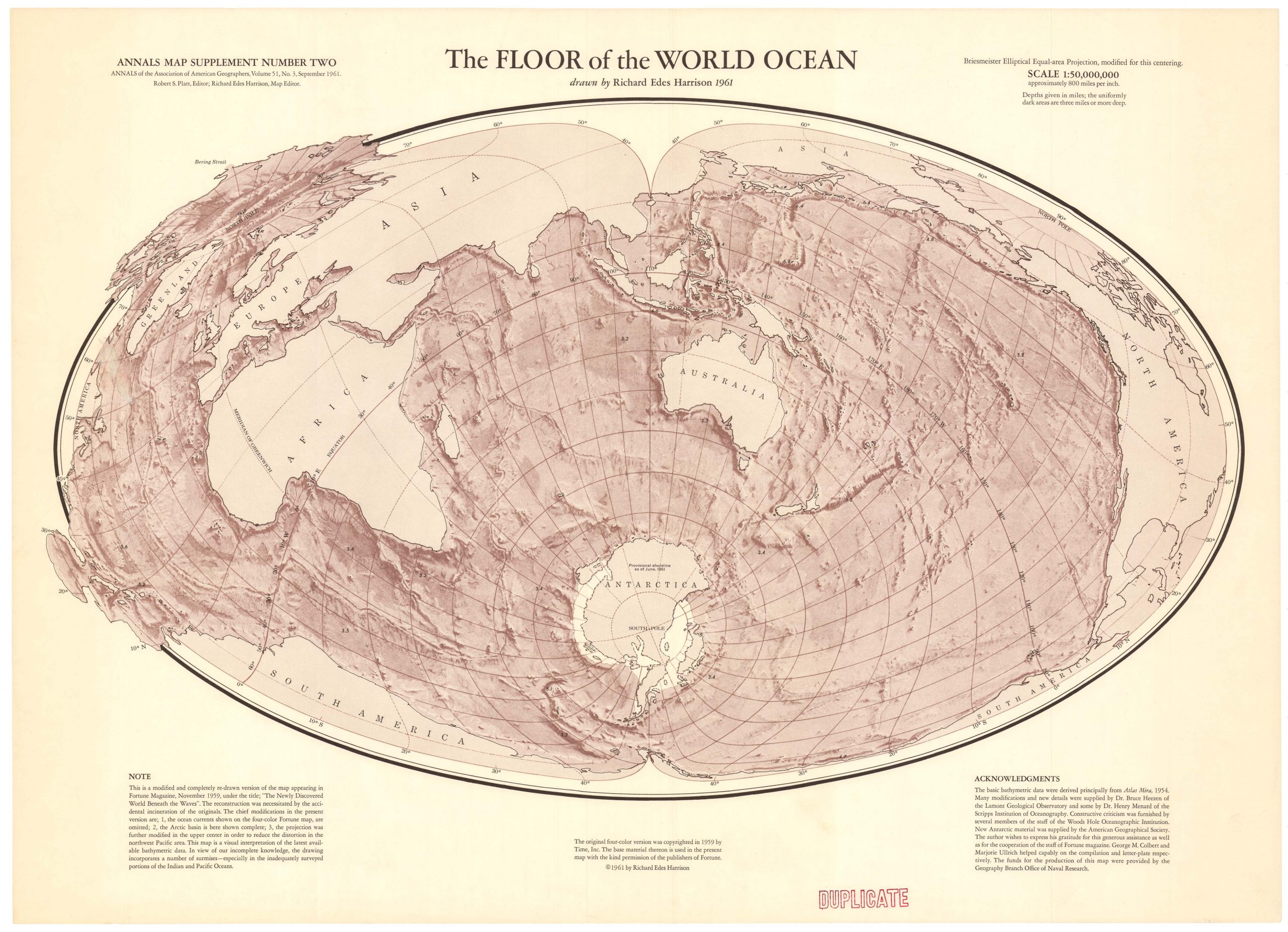Ortelius’ pioneering depiction of the Pacific Ocean.
MARIS PACIFICI, (quod vulgó Mar del Zur) cum regionibus circumiacentibus, insulisque in eodem passim sparsis, novissima descriptio.
Out of stock
Description
The first dedicated map of the Pacific, with exquisite original color!
Maris Pacifici constitutes a notable milestone in the evolution of cartography: it is the first standalone representation of the Pacific Ocean. An excellent example of this seminal map is offered here, being the earliest French edition and characterized by spectacularly preserved original coloring.
Compiling the map
Despite its pioneering status, or perhaps rather because of it, Ortelius’ map of the Pacific abounds in cartographic error and myth. Immediately noticeable is the dramatically exaggerated Pacific Northwest and an omission of Australia, both indicative of how limited geographical understanding was at this pivotal time in human history. In this sense, the inaccuracies are emblematic of the challenges faced by 16th-century cartographers, who were grappling with limited and unverifiable data and had to sort through a barrage of tall tales and extraordinary experiences from the high seas.
For example, looking at the configuration of North America, several features stand out. We note California is not yet depicted in the insular form that would become so popular during the 17th century. Moving further up America’s West Coast, we note the bulbous Pacific Northwest. The depiction of this region is almost entirely speculative, but it reveals Ortelius’ courage as a mapmaker. Many of his contemporaries would either gradually fade their delineation of this region or omit it altogether.
Ortelius’ Asian littoral
In scope, the map stretches from a dominant North America across the Pacific towards an enormous New Guinea and the Chinese coast. Fronting the China and Tartary coast, we find two large Japanese islands, one labeled Isla de la Prata. Within a decade of this map’s publication, the Dutch had established a monopoly with the Japanese in Nagasaki, a trade that included large amounts of silver. The map includes several textual annotations to China and Japan, including references to recent Jesuit missions.
Complementing the cartographic content are ornate cartouches framing the map’s title and creation date and some exciting vignettes characteristic of the late 16th century. The largest of these vignettes depicts Ferdinand Magellan’s ship, the Victoria, which was the first vessel to navigate Cape Horn and circumnavigate the globe. This was such an incredible feat at the time that depictions of the Victoria would continue to adorn maps of the Pacific for another hundred years or so. Another important vignette is China’s Great Wall, which is in the upper left corner of the map. These decorative elements not only serve to enhance the map’s visual appeal but also contextualize it within Ortelius’ broader body of work.
A final note should be made on the massive Terra Australis at the bottom of the chart. This gigantic antarctic continent was still commonplace in maps of this era. It was essentially an amalgamation of the ancient Ptolemaic model, the breaching of the Indian Ocean south of Africa, and mariners’ first unverified sightings of land.
Census
As indicated by the date in the secondary title cartouche (lower left corner), Ortelius compiled this map in 1589 for his 1590 addendum. From then on, it was included in fourteen new editions and thus exists in various forms. Neatline’s example is from the first French edition to include the addendum (also known as 1598F6), which was produced in 525 copies and printed by Christophe Plantin in Antwerp. The identification is based on the map’s verso text, in which the last line is left aligned and reads peut voir aux tables icy mises.
Cartographer(s):
Abraham Ortelius (1527-1598) was born in Antwerp to Flemish parents in 1527. After studying Greek, Latin, and mathematics, he and his sister set up shop as book dealers and a ‘painter of maps.’ In his heart, Ortelius was, nevertheless, first and foremost a historian. He believed geography was the ‘eye of history,’ which explains why he collected maps and historical documents with such passion. Ortelius traveled widely in pursuit of his interests, building contacts with mapmakers and literati all over the European continent.
Ortelius reached a turning point in his career in 1564 with the publication of a World Map in eight sheets, of which only a single copy survives. In 1570, he published a comprehensive collection of maps titled Theatrum orbis terrarum (Theatre of the World). The Theatrum is conventionally considered the first modern-style atlas. It was compiled by collecting maps and charts from colleagues across the continent, which Ortelius then had engraved in a uniform size and style. The engraver for most of the maps in Theatrum was none other than the famous Frans Hogenberg, who also served as the main engraver for the 16th-century urban atlas Civitates Orbis Terrarum, published with Georg Braun in 1572.
Hogenberg’s re-drawn and standardized maps formed the basis of the first atlas in history (even though it was Mercator who was the first to use the term a few decades later). Unlike many of his contemporaries, Ortelius noted his sources openly and in the first edition, acknowledged no less than eighty-seven different European cartographers. This ‘catalogus auctorum tabularum geographicum‘ is one of the major innovations of his atlas. The list of contributing mapmakers was kept up-to-date for decades after Ortelius’ death. In the first edition of 1570, this list included 87 names, whereas the posthumous edition of 1603 contained no less than 183 names.
While compiled by Abraham Ortelius in the manner described above, the Theatrum was first printed by Gielis Coppens van Diest, an Antwerp printer experienced with cosmographical books. Van Diest was succeeded by his son Anthonis in 1573, who in turn was followed by Gillis van den Rade, who printed the 1575 edition of Ortelius’ atlas. From 1579, Christoffel Plantin took over, and his successors continued to print Theatrum until Ortelius’ heirs sold the copperplates and the publication rights to Jan Baptist Vrients in 1601. In 1612, shortly after Vrients’s death, the copperplates passed to the Moretus brothers.
Condition Description
Excellent old color. Strong impression. Minor repair to a short bottom centerfold split in the margin.
References
Ort 12; Koeman/Meurer 124; Karrow 1/164. https://orteliusmaps.com/book/ort12.html
